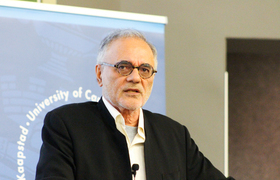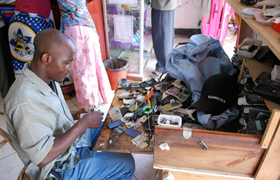A decolonial history of food
09 July 2018 | Story Helen Swingler. Photos Robyn Walker. Read time 5 min.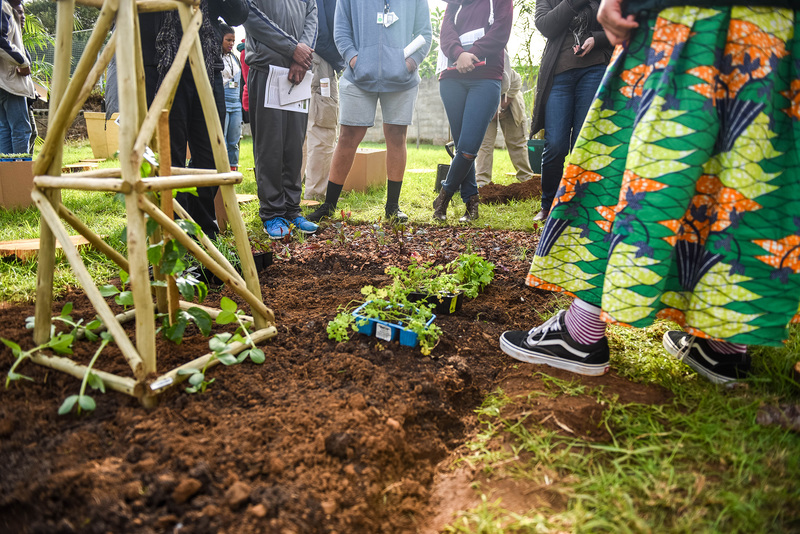
“Food. We eat it. We love it. But we don’t know its history; we don’t know where it comes from,” activist Vanessa Ludwig told participants in the agroecology session at the inaugural Decolonial Winter School.
Open to all staff and students, the school was coordinated by UCT’s Office for Inclusivity and Change, with input from the Institute for Creative Arts and the Centre for Extra-Mural Studies. It explored decolonial theory and practice, as well as contemporary topics ranging from land reform and resistance to sustainability and actualising justice.
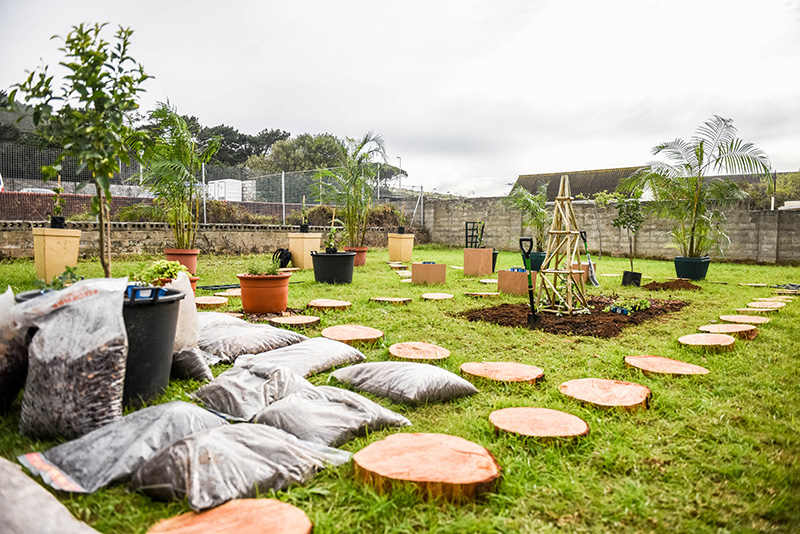
Colonised food
Colonialism permeates language, knowledge and culture as well the food we plant (and eat), both at a subsistence level and for the marketplace, Ludwig said. Her interactive session got participants thinking about the human story behind the food we consume and the value chain from farm to supermarket, dominated by large food conglomerates.
Ludwig’s session was one of several practical demonstrations around agroecology. Other participants took to the soil in different ways, another group learning how to prepare ground for planting fruit trees. The sessions took place on a piece of land behind Avenue Hall, which had been prepared by the grounds and gardens unit. Senior horticulturist Noelene le Cordier and her team were on hand to share their knowledge.
Many exotic varieties of fruit, vegetables and herbs have taken the place of their indigenous counterparts – acculturating our tastes and limiting our choices.
Take the humble garlic bulb. Part of the Alliacea family, garlic is believed to be a native of south Asia and one of the world’s oldest cultivated crops. Travellers and traders took it with them to Egypt, Pakistan, India and China. It’s a widely used ingredient in our kitchens.
But South Africa has three indigenous wild garlic species: Tulbaghia alliacea (used for its medicinal properties), Tulbaghia simmleri and Tulbaghia violacea (or isihaqa), named, ironically, after Ryk Tulbagh, Dutch governor of the Cape (1751 to 1771). Very little finds its way into our cooking pots.
Journey from west to east
In answering why our tastes have been corralled and our choices limited over the centuries, Ludwig took participants on a journey from Holland to the Cape (before it was colonised by the Dutch), to the Far East and the Americas.
“We have lost the knowledge.”
“How many exotic species have been assimilated into local diets over the centuries or appropriated and commercialised by large food conglomerates and pharmaceutical companies? We have lost the knowledge,” she lamented.
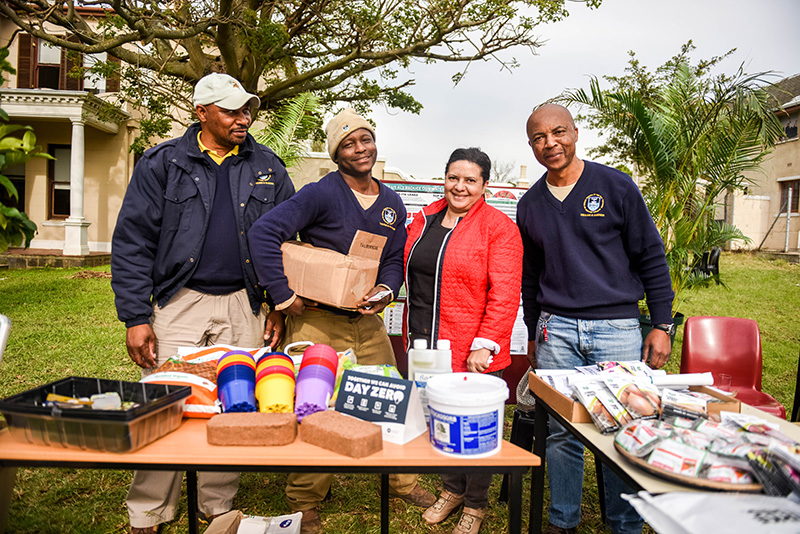
The ubiquitous carrot bears a particular colonial history. Native to Europe and southwestern Asia, black, red, white and yellow cultivars also exist, but the Dutch selectively bred the orange variety as a nod to the Dutch House of Orange-Nassau.
“So, we lost out on all the other colours,” Ludwig said.
Indigenous versus exotic
“Many of the foods we eat come from elsewhere, many varieties such as tomatoes, peppers, potatoes and sweet potatoes come from South America,” she continued.
Today they are staples in Africa. And many of Africa’s staples, such as peanuts, found their way with slaves to the New World where they later became household names, marketed as peanut butter under brands such as Kellogg’s and later, Skippy.
Ludwig also encouraged participants to learn about the food value of indigenous plants such as Spekboom. Spekboom is known to be a sponge for carbon (Ludwig has planted a row of Spekboom in front of her house to absorb the carbon emissions from passing traffic), but its fleshy leaves are packed with vitamin C, delicious additions to a green salad.
The variety of foods our ancestors ate were also limited over the years, she said.
“When the Dutch came here, the Khoi ate over 700 varieties of shellfish. How many kinds of shellfish do we eat today? So, over the years our diet has become less varied. We corporatise things; the types of fish and meat available to us now is very narrow.
“When the Dutch came here the Khoi ate over 700 varieties of shellfish. How many kinds of shellfish do we eat today?”
“We no longer eat the foods we used to. When that happens, the body changes and we get diseases. You don’t know the effects of your foodstuffs.”
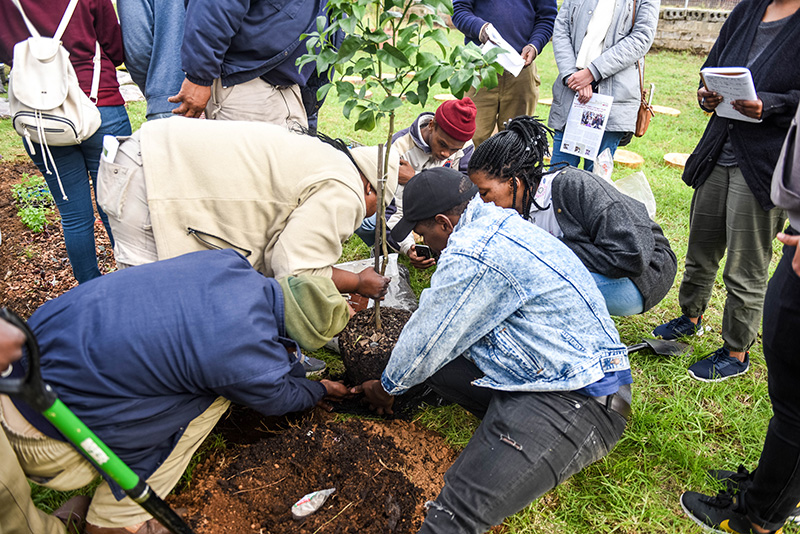
“The diversity of our food has been colonised by a small group of people who decided we are going to eat orange carrots. As a human species we are poorer for what we have done.”
Planting non-indigenous species also affects the soil, Ludwig added.
“You start changing the composition of the soil; you add things to grow the exotic species and the indigenous things die out.
“We need to understand the relationship between the land and what we eat. We have lost the knowledge.”
 This work is licensed under a Creative Commons Attribution-NoDerivatives 4.0 International License.
This work is licensed under a Creative Commons Attribution-NoDerivatives 4.0 International License.
Please view the republishing articles page for more information.







